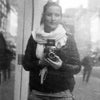The Eden Project is a visitor attraction in the United Kingdom, including the world's largest greenhouse.
The complex is dominated by two enclosures consisting of adjoining domes that house plant species from around the world. Each enclosure emulates a natural biome. The domes consist of hundreds of hexagonal and pentagonal, inflated, plastic cells supported by steel frames. The first dome emulates a tropical environment, and the second a Mediterranean environment.
The project was conceived by Tim Smit and designed by architect Nicholas Grimshaw and engineering firm Anthony Hunt and Associates (now part of Sinclair Knight Merz). Davis Langdon carried out the project management, Sir Robert McAlpine and Alfred McAlpine[1] did the construction and MERO designed and built the biomes. Land Use Consultants led the masterplan and landscape design. The project took 2½ years to construct and opened to the public on 17 March 2001.
The project is constructed in an unused china clay pit. Once into the attraction, there is a meandering path with views of the two biomes, planted landscapes, including vegetable gardens, and sculptures that include a giant bee and towering robot called RSA WEEE Man created from old electrical appliances.
At the bottom of the pit are two covered biomes:
The Tropical Biome, which is the largest greenhouse in the world, covers 1.56 hectares (3.9 acres) and measures 55 metres (180 ft) high, 100 metres (328 ft) wide and 200 metres (656 ft) long. It is used for tropical plants, such as fruiting banana trees, coffee, rubber and giant bamboo, and is kept at a tropical temperature and moisture level.
The Mediterranean Biome covers 0.654 hectares (1.6 acres) and measures 35 metres (115 ft) high, 65 metres (213 ft) wide and 135 metres (443 ft) long. It houses familiar warm temperate and arid plants such as olives and grape vines and various sculptures.
The Outdoor Biome (which is not covered) represents the temperate regions of the world with plants such as tea, lavender, hops, hemp and sunflowers.
The biomes are constructed from a tubular steel space-frame (hex-tri-hex) with mostly hexagonal external cladding panels made from the thermoplastic ETFE. Glass was avoided due to its weight and potential dangers. The cladding panels themselves are created from several layers of thin UV-transparent ETFE film, which are sealed around their perimeter and inflated to create a large cushion. The resulting cushion acts as a thermal blanket to the structure. The ETFE material is resistant to most stains, which simply wash off in the rain. If required, cleaning can be performed by abseilers. Although the ETFE is susceptible to punctures, these can be easily fixed with ETFE tape. The structure is completely self-supporting, with no internal supports, and takes the form of a geodesic structure. The panels vary in size up to 9 metres (29.5 ft) across, with the largest at the top of the structure.
The ETFE technology was supplied and installed by the firm Vector Foiltec, which is also responsible for ongoing maintenance of the cladding. The steel spaceframe and cladding package (with Vector Foiltec as ETFE subcontractor) was designed, supplied and installed by MERO (UK) PLC, who also jointly developed the overall scheme geometry with the architect, Nicholas Grimshaw & Partners.
The computer-controlled environmental control system that regulates the temperature and humidity in each dome was designed and installed by HortiMaX Ltd. (formally named Van Vliet Automation Ltd.) who are also responsible for ongoing maintenance of the environmental control and monitoring systems.
The entire build project was managed by McAlpine Joint Venture.
The Core is the latest addition to the site and opened in September 2005. It provides the Eden Project with an education facility, incorporating classrooms and exhibition spaces designed to help communicate Eden's central message about the relationship between people and plants. Accordingly, the building has taken its inspiration from plants, most noticeably in the form of the soaring timber roof, which gives the building its distinctive shape.
Grimshaw developed the geometry of the copper-clad roof in collaboration with a sculptor, Peter Randall-Page, and Mike Purvis of structural engineers SKM Anthony Hunts. It is derived from phyllotaxis, which is the mathematical basis for nearly all plant growth; the "opposing spirals" found in many plants such as the seeds in a sunflower's head, pine cones and pineapples. The copper was obtained from traceable sources, and the Eden Project is working with Rio Tinto to explore the possibility of encouraging further traceable supply routes for metals, which would enable users to avoid metals mined unethically. The services and acoustic design was carried out by Buro Happold.
The mechanical and electrical engineering design was by Buro Happold. At the insistence of architect Jolyon Brewis (Grimshaw) the photo voltaic array on the roof of the core building was arranged in an inclined circle for aesthetic reasons. However this arrangement ensures that more than half of the panels never receive direct sunlight. At the time of installation the electrical engineer making connections deemed that it was not worth while to connect these panels, as their potential to generate electricity was so limited. The value of the panels at the time of installation was around £260,000.[]
The domes provide diverse growing conditions, and many plants are on display.
The Eden Project includes environmental education focusing on the interdependence of plants and people; plants are labelled with their medicinal uses. The massive amounts of water required to create the humid conditions of the Tropical Biome, and to serve the toilet facilities, are all sanitized rain water that would otherwise collect at the bottom of the quarry. The only mains water used is for hand washing and for cooking. The complex also uses Green Tariff Electricity — the energy comes from one of the many wind turbines in Cornwall, which were among the first in Europe.
Controversially, one of the companies the Eden Project currently partners with is the British mining company Rio Tinto Group.[] Rio Tinto is set to begin mining in Madagascar for titanium dioxide. This will involve the removal of a large section of coastal forest, and may cause extensive damage to the unique biodiversity of the Malagasy flora and fauna.[2]
The first part of the Eden Project, the visitor centre, opened to the public in May 2000. The full site opened on 17 March 2001.
The Project hosted the "Africa Calling" concert of the Live 8 concert series on 2 July 2005. It was also used as a filming location for the 2002 James Bond film, Die Another Day (starring Pierce Brosnan) . It also provided some plants for the British Museum's Africa garden.
In 2005, the Project launched "A Time of Gifts" for the winter months, November to February. This features an ice rink covering the lake, with a small café/bar attached, as well as a Christmas market. Cornish choirs regularly perform in the biomes.
Since 2002, the Project has hosted a series of musical performances, called the Eden Sessions. Artists have included Amy Winehouse, James Morrison, Muse, Lily Allen, Snow Patrol, Pulp, Brian Wilson and The Magic Numbers. 2008's summer headliners were: The Verve, Kaiser Chiefs and KT Tunstall. Oasis were also set to play in the summer of 2008, but the concert was postponed because Noel Gallagher was unable to perform after breaking three ribs in a stage invasion incident several weeks before. The concert was instead played in the summer of 2009[].
On 6 December 2007, the Eden Project invited people all over Cornwall to try to break the world record for the biggest ever pub quiz as part of its campaign to bring £50 million of lottery funds to Cornwall.[3]
In December 2007, the Project failed in its bid for £50 million of funding, after the Big Lottery Fund popular vote, when it received just 12.07% of the votes, the lowest for the four projects being considered. Eden wanted the money for Edge, a proposed desert biome[].
In December 2009, Much of the project, including both greenhouses, became available to navigate through Google Street View.
The site occupied by the Eden Project was used by the BBC as the planet surface of Magrathea in the 1981 TV series of the Hitchhiker's Guide to the Galaxy.[]
In 2007, there was press criticism that the Eden Project received too much public funding, £130 million from various sources, and that it should be more self-supporting.





